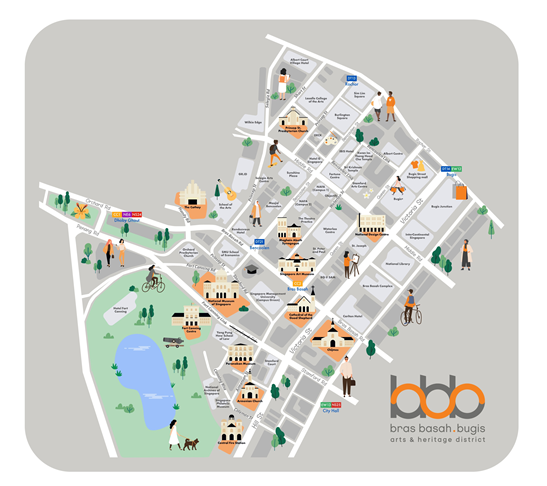
The Bras Basah.Bugis (BBB) precinct is Singapore’s arts and heritage district. Charmed with a
unique mix of the rich heritage of Singapore's past and the modernity of art and architecture, BBB is a
living representation of a modern city that thrives on its vibrant and energetic creative communities
while also treasuring the heritage that our forefathers have laid.
BBB is also one of the oldest districts in Singapore – Bras Basah was one of the most ethnically
diverse of its time, with Jews, Europeans, Eurasians, Malays, Indian, Armenians and Chinese living
alongside one another; while Bugis was a bustling place of trade and entertainment.
In recent years, BBB has become the creative heart of Singapore, with a concentration of art schools,
museums, galleries, and cultural collectives such as the National Museum of Singapore, National Archives
of Singapore, Singapore Art Museum, Peranakan Museum, Children’s Museum of Singapore, and the
National Design Centre.
BBB’s architecture is a unique and exhilarating mix of old and new, with churches and cathedrals
such as the Armenian Church of Saint Gregory of the Illuminator, Chinese and Hindu temples, and
colonial-era buildings standing alongside stunning pieces of contemporary architecture such as the
School of the Arts (Singapore’s only high school for the arts) and the National Library.
BBB is also a lifestyle destination with its many malls and lifestyle clusters, such as CHIJMES, The
Cathay, Bugis Junction and Bugis Street capitalising on heritage, design and the arts for a distinctive
shopping experience.
Finally, BBB also has a vibrant events calendar, with exhibitions and festivals taking place all year
round, culminating in the annual Singapore Night Festival in August where Singaporeans and visitors
alike take to the streets, literally, to celebrate and party through the night.